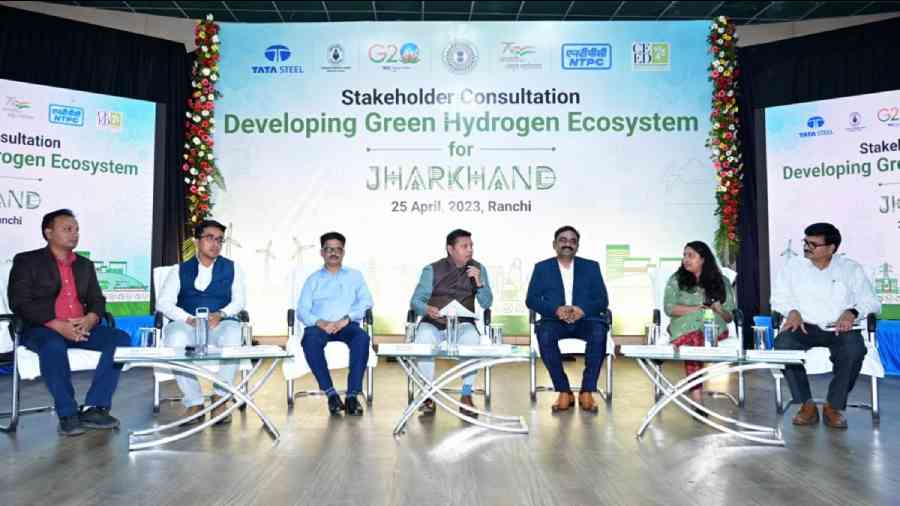Jharkhand aspires to harness green hydrogen to strengthen energy security and it has constituted a task force to boost the "Green Hydrogen Mission".
This was stated by Jharkhand’s additional chief secretary of the energy department, Avinash Kumar, during a stakeholders' meeting on "Developing Green Hydrogen Ecosystem for Jharkhand" in Ranchi, organised by the task force on Green Hydrogen Mission, Jharkhand government and Centre for Environment and Energy Development (CEED).
“The state government is committed to ensure energy security in the state and accordingly cleaner sources of energy have been prioritised. As a form of clean energy, hydrogen is the future. Green hydrogen is considered the next big thing to fulfil the net-zero ambitions and climate-related goals in India and Jharkhand. According to the mandates of the National Green Hydrogen Mission and net-zero scenario, we are also exploring its huge potential in the state to bring its economic advantages and environmental co-benefits in the state,” said Avinash Kumar.
“For achieving the net-zero scenarios, the government of India has launched a National Green Hydrogen Mission in 2022 and subsequently announced Green Hydrogen Policy. As a part of the mandates, the government of Jharkhand has formed a task force on Green Hydrogen Mission in March 2023 to assess the current scenario of hydrogen energy, best practices from around the globe, its applicability and suitability for the state and accordingly create a roadmap for implementing the mission in Jharkhand,” added Kumar.
The task force is chaired by retired Indian forest service official A.K. Rastogi and its nominated members include senior officials from energy and forest departments along with NTPC regional executive director Partha Majumdar, Central Coalfields Limited's project and planning director B. Sai Ram and Tata Steel sustainability and decarbonisation project chief Ajit Dhanraj Kothari.
Rastogi said: “Jharkhand is primarily an industrialised state with a strong presence of industries of iron-steel, transport vehicles, cement and others. Broadly these sectors are considered as hard to abate in terms of the decarbonisation process, where the role of low-carbon energy and technologies is crucial. This requires a holistic approach to presenting technical know-how, infrastructure support and ecosystem change. According to the mandates set by the state government, the task force has started conducting consultations and workshops with key stakeholders to prepare a repository of information in light of the best practices to create an action plan for tapping green hydrogen in the state.”
“As a form of cleaner energy, hydrogen has been categorised as grey, black, blue and green based on its sources. At present, all of the hydrogen consumed in India comes from fossil fuels. According to the estimates of Niti Aayog and other institutions, there will be about 23 MT hydrogen demand by 2050 in India, while the current output is only 6.7 MT. However, by 2050, nearly 80 per cent of India’s hydrogen is projected to be ‘green’ — produced by renewable electricity and electrolysis,” added Rastogi.











